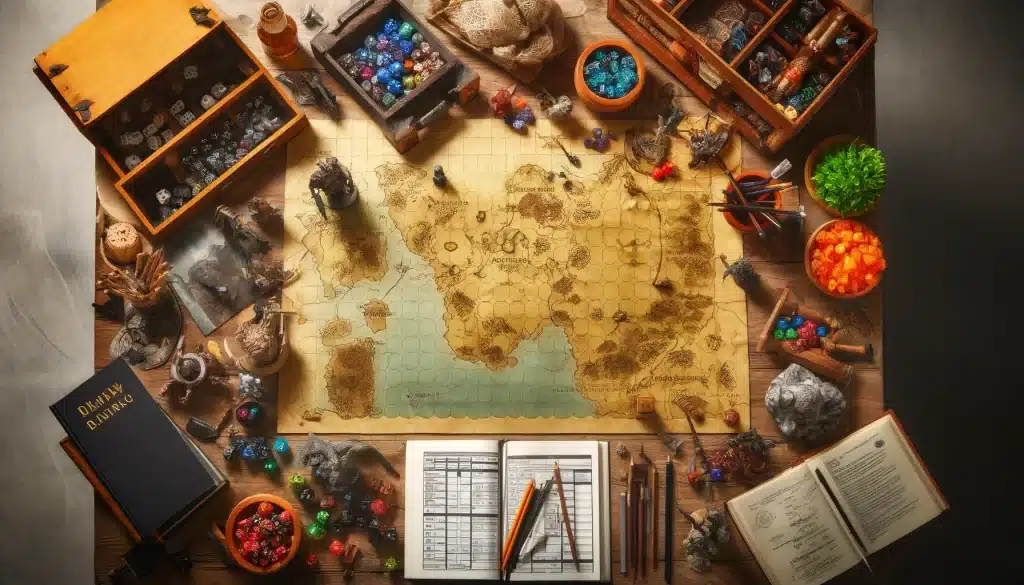
Discover the Best Places to Eat in Rock Hill SC for Global Flavors
Rock Hill, SC, is more than just a charming town. It’s a culinary

Welcome to the enchanting world of TTRPGs (Tabletop Roleplaying Games). Within these realms, storytelling reigns supreme, weaving narratives that captivate players and transport them to fantastical lands. As you delve into this blog, you’ll uncover the pivotal role storytelling plays in Tabletop Roleplaying Games, where every dice roll shapes legendary tales. From character development to immersive world-building, each aspect contributes to a collaborative storytelling experience unlike any other. Join us on this journey as we explore the magic of TTRPGs and how they master the art of storytelling.
In the realm of tabletop role-playing games, storytelling takes center stage, immersing players in a world where every decision shapes the story. Enhancing narrative skills is not just about words on a page but about crafting tales that come alive with each roll of the dice. By creating immersive worlds, game masters transport players to fantastical realms where their actions have real consequences.
Memorable campaigns are born from unexpected twists and turns that keep players on the edge of their seats. In one instance, a failed stealth attempt unveiled a shocking truth, turning an innocent encounter into a pivotal moment. Player engagement thrives on these unpredictable outcomes, where every choice matters and every roll can alter the course of the story.

Welcome to the realm of crafting an Epic Campaign in the world of Tabletop Roleplaying Games (TTRPGs). As a game master, your role is pivotal in shaping the game world and creating an unforgettable experience for your players. Let’s delve into the intricate art of campaign planning and player engagement to ensure that your TTRPG campaign leaves a lasting impression.
Embark on your journey by Setting Goals that will guide the direction of your epic campaign. Define overarching objectives that challenge and intrigue your players, driving them to explore uncharted territories and face formidable foes. By establishing clear goals, you provide a roadmap for both yourself and your players, setting the stage for an immersive storytelling experience.
As you delve deeper into plot development, consider weaving a tapestry of interconnected storylines that captivate and surprise your players at every turn. Embrace twists and revelations that keep them on their toes, eagerly anticipating what lies ahead. Every plot point should serve a purpose, propelling the plot forward while allowing room for player agency to shape the unfolding tale.
Empower your players with player agency, granting them the freedom to make choices that impact the story’s progression. Nurture a collaborative environment where their decisions hold weight and consequence, fostering a sense of ownership over their characters’ destinies. By embracing player agency, you invite unpredictability into your campaign, sparking creativity and engagement among all participants.
Infuse your epic campaign with dynamic storylines that ebb and flow in response to player actions and choices. Embrace improvisation as a tool to adapt to unexpected developments, keeping the narrative fresh and engaging. Allow space for character growth and evolution within the storyline, creating opportunities for memorable moments that resonate long after the dice have been rolled.
In crafting an epic campaign for tabletop roleplaying games, remember that flexibility is key. Adapt to the ever-changing landscape of player decisions and interactions, weaving a tale that evolves organically with each session. Your dedication to storytelling excellence will transform ordinary gaming sessions into extraordinary adventures that linger in the hearts and minds of all who partake in your epic saga.
As you embark on the journey of character development in Tabletop Roleplaying Games, you hold the power to shape intricate backstories and compelling character arcs that breathe life into your gaming experience. Character Backstories serve as the foundation upon which your character’s motivations, fears, and desires are built. Delve deep into their past, unearthing secrets that fuel their actions and decisions in the present. Each detail uncovered adds layers of complexity, sparking curiosity and intrigue among fellow players.
Crafting Character Arcs is akin to guiding your character through a transformative odyssey, where growth and evolution are inevitable. Characters evolve over time, influenced by experiences that test their resolve and beliefs. Embrace the challenges presented within your game campaign, for it is through adversity that characters truly shine. Every decision made, every dice roll cast, shapes the trajectory of your character’s journey, leading to unexpected twists and poignant moments that resonate long after the game session ends.
In a Tabletop RPG campaign, Non-Player Characters (NPCs) play a pivotal role in enhancing the plot and fostering player interaction. NPCs act as catalysts for change within the narrative landscape, offering quests, challenges, or alliances that propel the story forward. Engage with NPCs authentically, responding to their cues and motivations with agency and intent. Your interactions with NPCs can unveil hidden truths, forge alliances, or spark conflicts that test your character’s mettle.
Embrace the dynamic nature of characters in TTRPGs; allow your characters to evolve organically through gameplay experiences and interactions with both players and NPCs. The tapestry of storytelling woven through memorable characters enriches the gaming experience for all involved, creating moments of camaraderie, tension, or triumph that linger in the hearts of players long after the final dice roll.

In the realm of tabletop roleplaying games, world-building techniques serve as the foundation upon which epic adventures unfold. Imagine vast continents teeming with mystical creatures, ancient ruins whispering long-forgotten secrets, and cities bustling with intrigue and danger. As a game master, your canvas is blank, awaiting your creative brushstrokes to breathe life into a world unlike any other.
Immerse players in a world where every detail contributes to the overarching narrative. Whether it’s the eerie silence of a haunted forest or the bustling markets of a vibrant city, each setting sets the stage for memorable adventures that linger in players’ minds long after the game session ends.
The immersive environments you create are more than just backdrops; they are characters in their own right, shaping player experiences and driving narrative progression. A well-crafted setting can evoke emotions, spark curiosity, and challenge players to think beyond their comfort zones.
Maintaining consistency in your world-building efforts is key to fostering player immersion and suspension of disbelief. Ensure that details established early on remain true throughout the campaign, creating a cohesive experience that resonates with players on a deeper level.
Recap of the importance of storytelling in TTRPGs:
Encouragement to explore TTRPGs for story enhancement:
Final thoughts and future outlook:
Gear up for game night with the latest Adventurer’s Table merch—shop now and bring your A-game in style!

Rock Hill, SC, is more than just a charming town. It’s a culinary

Family-friendly restaurants are more than just places to eat; they are vital community